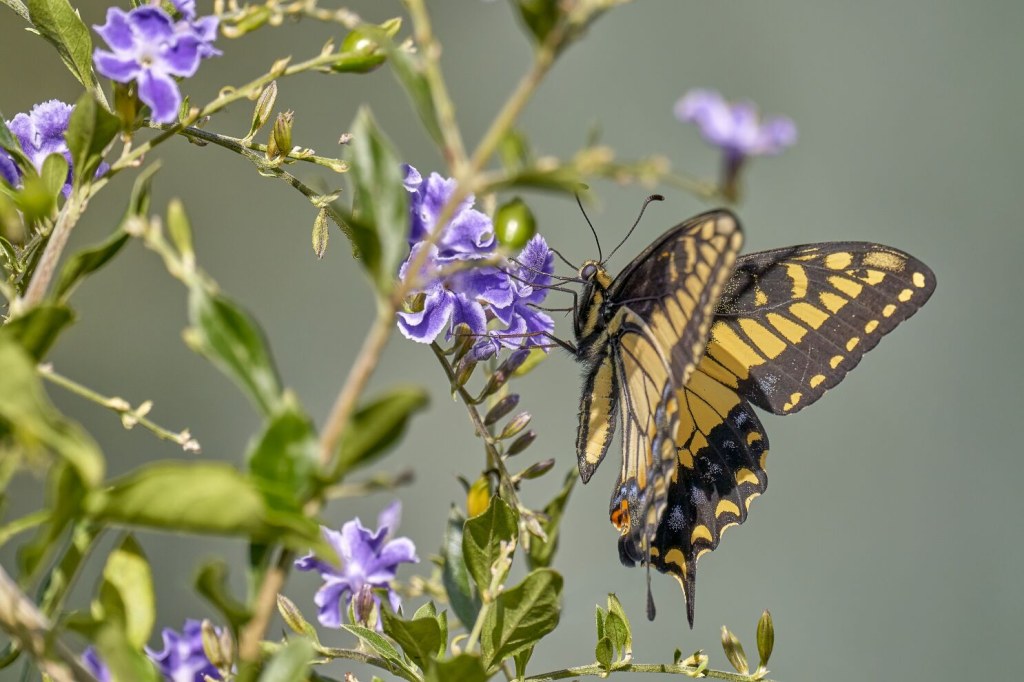Blossoming The Perfect Puzzle: The Enchanting Butterfly Attracting Flowers Crossword – Unleash Your Inner Nature Lover Now!
Butterfly Attracting Flowers Crossword: A Guide to Creating a Beautiful Butterfly Garden
Introduction
Dear Flower Enthusiast,
1 Picture Gallery: Blossoming The Perfect Puzzle: The Enchanting Butterfly Attracting Flowers Crossword – Unleash Your Inner Nature Lover Now!

Welcome to our comprehensive guide on creating a beautiful butterfly garden through a butterfly attracting flowers crossword! In this article, we will explore the various aspects of attracting butterflies and creating a vibrant ecosystem in your backyard. By understanding the different types of flowers that butterflies are attracted to, you can transform your garden into a haven for these enchanting creatures.

Image Source: brightspotcdn.com
Now, let’s dive into the world of butterfly attracting flowers and discover the wonders they can bring to your garden.
What are Butterfly Attracting Flowers?
🦋 Butterfly attracting flowers are specific types of flowers that are known to attract butterflies with their vibrant colors, enticing scents, and nectar-rich blooms. These flowers act as magnets for butterflies, providing them with a source of food and shelter.
When selecting butterfly attracting flowers for your garden, it is important to choose a variety of plants that bloom at different times throughout the year. This will ensure a continuous food source for butterflies and increase the chances of attracting a diverse range of species.
Some popular examples of butterfly attracting flowers include lavender, marigold, zinnia, milkweed, and coneflower. These flowers not only attract butterflies but also add beauty and color to your garden.
Who Can Benefit from Butterfly Attracting Flowers?
🦋 Anyone who appreciates the beauty and grace of butterflies can benefit from butterfly attracting flowers. Whether you are an experienced gardener or a beginner, creating a butterfly garden can be a rewarding and educational experience.
Butterfly attracting flowers also play a crucial role in supporting the declining butterfly populations. By providing these winged wonders with a suitable habitat and ample food sources, we can contribute to their conservation and ensure their survival for future generations to enjoy.
Moreover, butterfly gardens can be a source of inspiration and relaxation, allowing you to connect with nature and observe these delicate creatures up close.
When is the Best Time to Plant Butterfly Attracting Flowers?
🦋 The best time to plant butterfly attracting flowers depends on your location and the climate of your region. In general, it is recommended to plant these flowers in the spring or fall when the temperatures are moderate.
Spring planting allows the flowers to establish themselves before the hot summer months, while fall planting gives them a head start for the following spring. However, specific flower species may have different planting requirements, so it is essential to research their individual needs.
Remember to consider the frost dates in your area and plant accordingly, ensuring that the flowers have enough time to grow and bloom before the first frost arrives.
Where Should I Plant Butterfly Attracting Flowers?
🦋 To create a successful butterfly garden, it is important to choose the right location for planting butterfly attracting flowers. Butterflies are attracted to sunny, open areas that provide them with ample sunlight and warmth.
When selecting a spot for your butterfly garden, look for an area that receives at least six hours of direct sunlight per day. Avoid planting in shaded areas or near tall trees, as butterflies prefer open spaces with easy access to flowers.
Ensure that the soil in your chosen location is well-drained and fertile. This will provide a healthy environment for the flowers to grow and thrive. Consider adding organic matter to improve the soil’s quality and drainage.
Why Should I Create a Butterfly Garden?
🦋 Creating a butterfly garden offers numerous benefits, both for the environment and for your personal enjoyment. Here are some compelling reasons to start your own butterfly garden:
1. Conservation: By creating a butterfly garden, you are providing a safe haven for these delicate creatures and contributing to their conservation efforts.
2. Pollination: Butterflies are important pollinators, aiding in the reproduction of many plant species. By attracting butterflies to your garden, you are promoting pollination and supporting the overall health of your ecosystem.
3. Educational Experience: A butterfly garden provides a unique opportunity to learn about the life cycle of butterflies and their interactions with plants. It can be a wonderful educational experience for children and adults alike.
4. Aesthetically Pleasing: Butterfly attracting flowers add beauty, color, and vibrancy to your garden, creating a visually appealing landscape that will delight both you and your visitors.
5. Relaxation and Stress Relief: Spending time in a butterfly garden can be a calming and therapeutic experience, helping to reduce stress and improve your overall well-being.
How Can I Create a Butterfly Garden?
🦋 Creating a butterfly garden involves several key steps:
1. Research: Learn about the butterfly species in your region and the specific flowers they are attracted to. This will help you select the right plants for your garden.
2. Choose the Right Plants: Select a variety of butterfly attracting flowers that bloom at different times throughout the year. This will ensure a continuous food source for butterflies.
3. Provide Shelter: Include plants that provide shelter and resting spots for butterflies, such as tall grasses or shrubs.
4. Add Water Sources: Butterflies need access to water for drinking and puddling. Consider adding shallow dishes filled with water or creating a small water feature in your garden.
5. Avoid Pesticides: Use organic pest control methods and avoid the use of harmful pesticides in your butterfly garden, as they can be toxic to butterflies and other beneficial insects.
6. Maintain the Garden: Regularly maintain your butterfly garden by watering, weeding, and pruning as needed. This will ensure the health and longevity of your plants.
7. Enjoy and Observe: Spend time in your butterfly garden, observing the interactions between butterflies and flowers. Keep a journal or take photographs to document your sightings and discoveries.
Advantages and Disadvantages of Butterfly Attracting Flowers
Advantages:
1. Conservation of butterflies and other pollinators.
2. Promotion of biodiversity in your garden.
3. Colorful and aesthetically pleasing garden.
4. Educational opportunities for children and adults.
5. Eco-friendly gardening practices.
Disadvantages:
1. Potential damage to plants caused by caterpillars feeding on leaves.
2. Maintenance and care required to ensure the health of the garden.
3. Attraction of other insects, such as bees and wasps, which may not be desired by some individuals.
4. Potential allergic reactions to certain plants or insect bites.
5. Additional time and effort needed for research and planning.
Frequently Asked Questions (FAQ)
1. Can I create a butterfly garden in a small space?
Yes, you can create a butterfly garden in a small space by choosing compact, container-friendly plants and utilizing vertical gardening techniques. Even a small balcony or patio can be transformed into a butterfly haven.
2. Do I need a large budget to create a butterfly garden?
No, you do not need a large budget to create a butterfly garden. Many butterfly attracting flowers are affordable and readily available. You can also propagate plants from seeds or cuttings to save money.
3. Will attracting butterflies to my garden attract other pests as well?
While creating a butterfly garden may attract other insects, such as bees and wasps, they play important roles in pollination and maintaining a balanced ecosystem. By planting a diverse range of flowers, you can minimize the impact of unwanted pests.
4. How long does it take for butterflies to visit my garden?
The time it takes for butterflies to visit your garden depends on various factors, including the availability of food sources, the local butterfly population, and the proximity of your garden to natural habitats. Patience is key, as it may take a few weeks or even months for butterflies to discover and frequent your garden.
5. Can I attract specific butterfly species to my garden?
While you cannot control which butterfly species visit your garden, you can create an inviting habitat by planting the specific flowers that attract the butterflies you wish to see. Research the preferred plants of the desired butterfly species and incorporate them into your garden.
Conclusion
Creating a butterfly garden through a butterfly attracting flowers crossword is a rewarding and fulfilling endeavor. By providing a suitable habitat and a range of nectar-rich blooms, you can attract and support a diverse array of butterflies in your garden. Not only will you be contributing to their conservation, but you will also be creating a visually stunning and vibrant landscape for yourself and others to enjoy.
So, why wait? Get started on your butterfly garden today and experience the joy and wonder of witnessing these beautiful creatures in their natural habitat.
Final Remarks
Creating a butterfly garden is a journey that requires dedication, time, and effort. Remember to research and select the appropriate plants for your region, provide the necessary resources, and maintain your garden regularly. It is essential to consider the specific needs of butterflies and other pollinators to ensure their survival and well-being.
Disclaimer: The information provided in this article is for educational purposes only. The reader is solely responsible for any actions taken based on the information provided. Please consult with a gardening professional or local authorities for specific advice and guidelines.
This post topic: Flower

